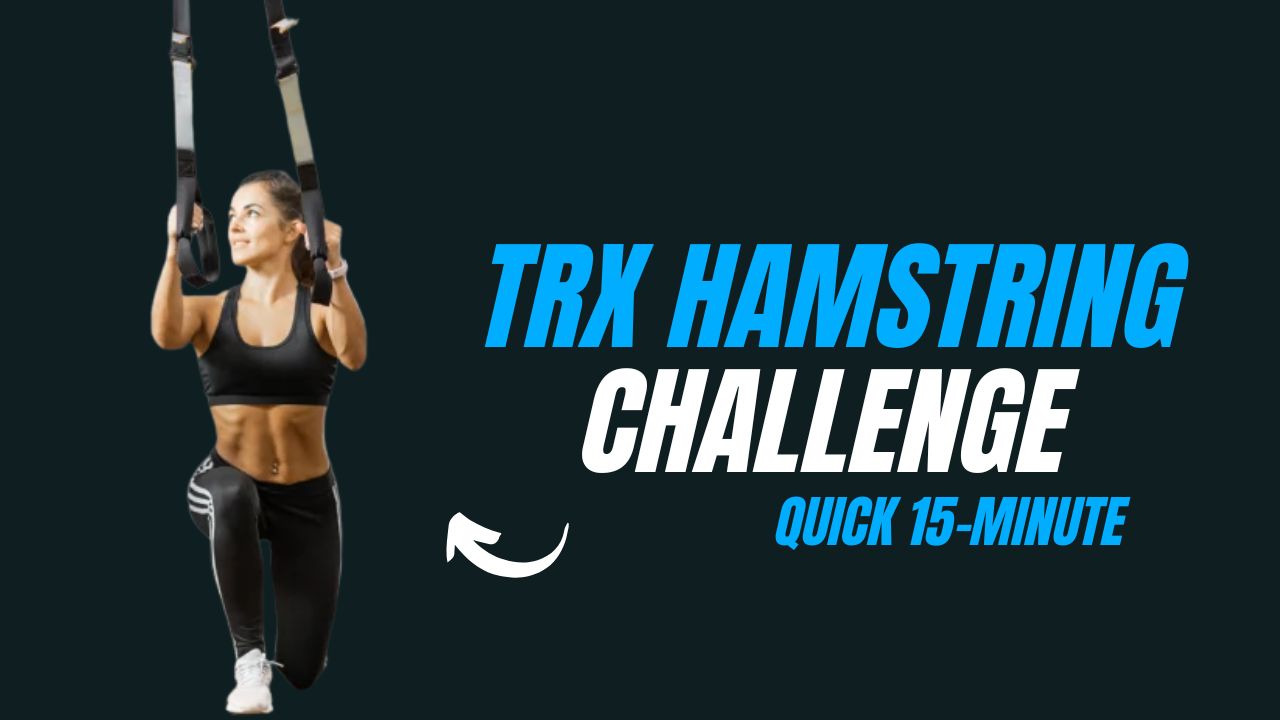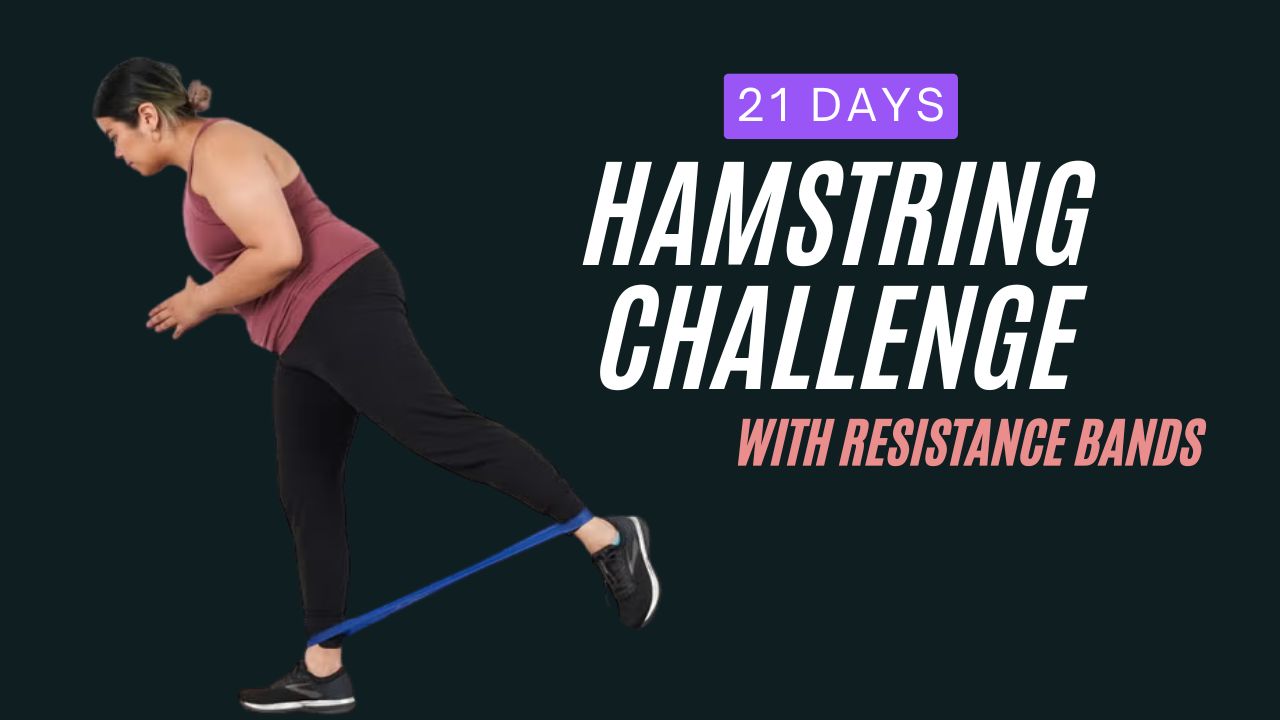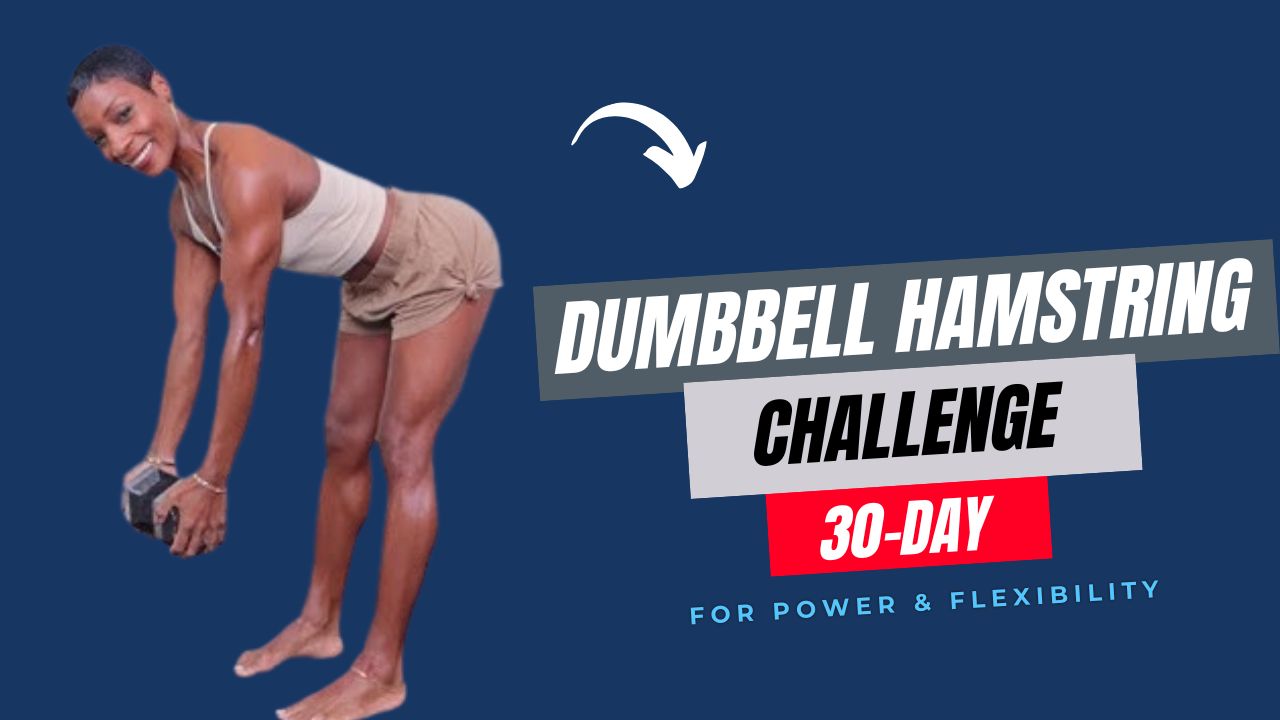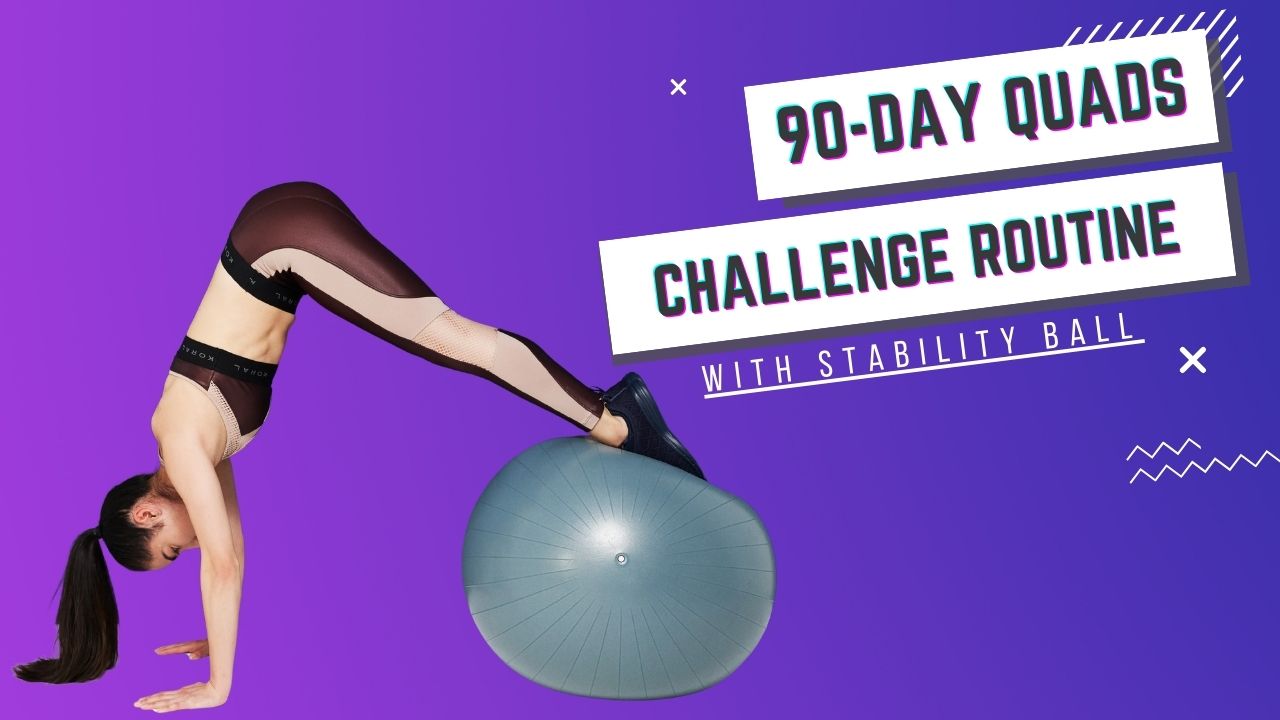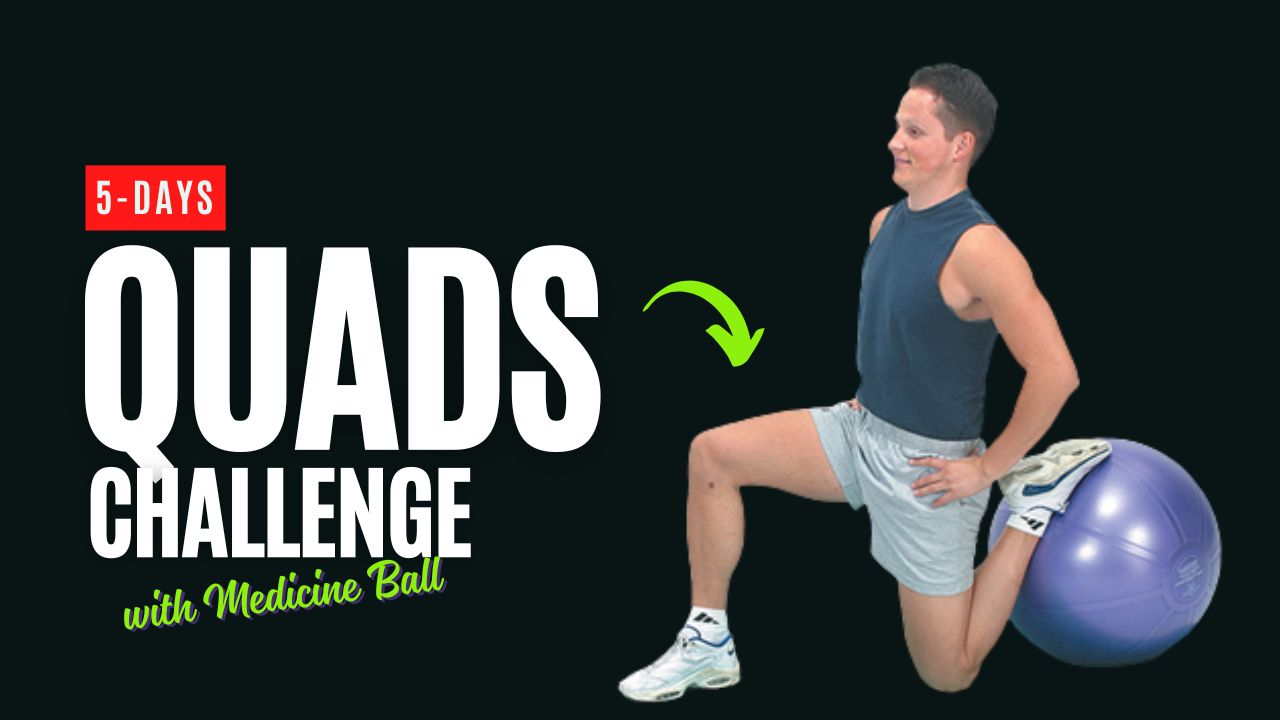Do you think hamstring training is just about deadlifts and leg curls?
Think again.
Medicine balls, often overlooked in lower body training, can take your hamstring game to the next level — boosting balance, mobility, and raw power.
Whether you’re chasing athletic speed, building a resilient lower back, or sculpting leaner legs, these 7 dynamic medicine ball hamstring moves offer variety and performance-driven gains.
Let’s bust a common myth:
Myth: “Hamstring exercises only matter for athletes.”
Truth: Your hamstrings are the foundation of everyday movement — from walking to lifting groceries. Weak hamstrings can lead to posture issues, lower back pain, and knee injuries.
Ready to challenge your body and reshape your training routine?
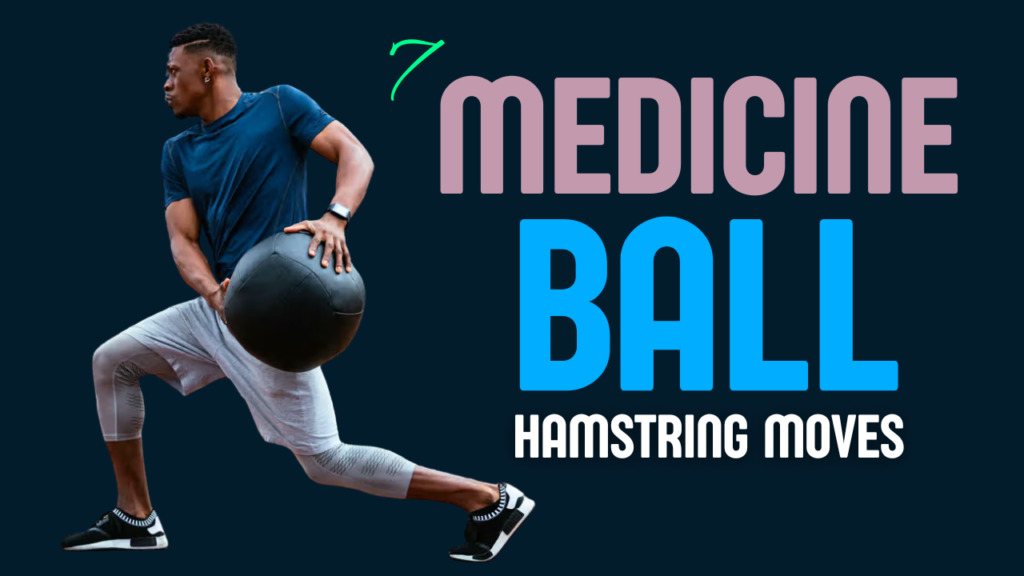
Table of Contents
Why Use a Medicine Ball for Hamstring Work?
Medicine balls add an element of instability, coordination, and power to your workouts. Unlike machines or barbells that isolate, med balls encourage full-body synergy — involving core, glutes, and even your stabilizers.
✅ Benefits of Medicine Ball Hamstring Exercises:
- Improves functional hamstring strength
- Enhances explosive movement (great for runners, jumpers, lifters)
- Boosts core-hamstring-glute coordination
- Builds injury-resilient hamstrings
- Adds fun, dynamic variety to your routine
Do’s & Don’ts of Medicine Ball Hamstring Exercises
| Do’s | Don’ts |
|---|---|
| Warm up your hamstrings and glutes before starting | Don’t jump into advanced variations without mastering basics |
| Focus on controlled, slow movements for better activation | Don’t use a medicine ball that’s too heavy to control |
| Engage your core throughout each exercise | Don’t arch or hyperextend your lower back during reps |
| Start with 2–3 sets of 10–15 reps per move | Don’t rush through the exercises just to complete the reps |
| Use a non-slip mat or surface for stability | Don’t perform these on hard slippery floors |
| Breathe steadily and use your exhale during exertion | Don’t hold your breath while performing hamstring curls |
| Progress to single-leg or dynamic moves gradually | Don’t ignore pain signals or tightness in your hamstrings |
| Include rest days to allow for muscle recovery | Don’t train the same muscle group intensely every day |
How to Use This Guide:
- You’ll find 7 exercises with step-by-step how-to instructions, pro tips, and the primary benefit of each.
- Choose 3–5 moves, 2–3 sets, 10–15 reps each.
- Perform 2–3x/week for noticeable strength, mobility, and definition improvements.
7 Best Medicine Ball Hamstring Moves
1. Medicine Ball Hamstring Curl (on Floor)
Main Benefit: Targets hamstring curl mechanics while engaging your glutes and core.
How to Do It:
- Lie on your back, knees bent, heels on top of a medicine ball.
- Lift hips off the ground into a glute bridge position.
- Roll the ball in toward your glutes by bending your knees.
- Extend your legs to roll it back out — keep hips elevated.
- Repeat with control.
Pro Tip: If your hips drop, reset. Glute engagement is key!
2. Hamstring Walkouts with Med Ball
Main Benefit: Enhances hamstring length-strength while training control.
How to Do It:
- Start in a glute bridge, feet on the ball.
- Walk your heels outward slowly (1–2 inches at a time).
- Walk them back in the same way.
- Keep your hips lifted throughout the movement.
Did You Know?
Hamstring walkouts activate both the biceps femoris and semitendinosus, hitting multiple heads of the hamstring group for better muscle balance.
3. Single-Leg Hamstring Curl
Main Benefit: Unilateral strength for injury prevention and athletic power.
How to Do It:
- Lie back, one foot on the ball, the other leg raised straight up.
- Lift hips and curl the ball in toward your glutes with one leg.
- Extend and repeat before switching legs.
Pro Tip: This move exposes weaknesses — expect one leg to be harder. That’s exactly why it works.
4. Med Ball Glute Bridge Toss
Main Benefit: Builds explosive hip-hamstring drive.
How to Do It:
- Lie on your back, feet flat, holding a medicine ball at your hips.
- Bridge your hips up while tossing the ball slightly upward.
- Catch it on the way down and repeat.
Caution: Don’t go too heavy. Use a moderate-weight ball you can control.
5. Hamstring Plank Curl
Main Benefit: Integrates core and hamstring strength with balance.
How to Do It:
- Start in a plank with both shins on a medicine ball.
- Pull the ball in toward your chest by bending your knees.
- Extend back into plank position.
Myth Breaker: Planks are just for abs?
Add a rolling ball — they become full posterior chain killers.
6. Lying Leg Raises with Ball Pinch
Main Benefit: Isometric hamstring and adductor control.
How to Do It:
- Lie flat, place the med ball between your heels.
- Squeeze the ball tight and raise both legs to 45 degrees.
- Lower slowly without letting go of the squeeze.
Pro Tip: This lights up your hamstrings and inner thighs — great for improving leg symmetry.
7. Standing Hamstring Reach with Med Ball
Main Benefit: Trains hamstring stretch under load, improving flexibility and strength.
How to Do It:
- Stand tall, holding the medicine ball at chest height.
- Step one leg back slightly, then hinge at the hips (RDL-style).
- Reach the ball toward your grounded foot, keeping back flat.
- Return to standing and switch sides.
Pro Tip: Think slow and steady here — this is more about control than reps.
Bonus Tips for Success
- Warm up with light mobility and activation moves (like glute bridges, leg swings).
- Focus on form, not speed. Control activates your hamstrings more than momentum.
- Progress wisely — start with bodyweight versions if needed, then add the ball.
- Pair these with glute and core work for a bulletproof backside.
What Happens After 30 Days of These Exercises?
| Week | What You May Experience |
|---|---|
| Week 1 | DOMS (soreness), learning curve, improved awareness of hamstring activation |
| Week 2 | Increased hamstring endurance, better hip stability |
| Week 3 | Reduced tightness, stronger glute-ham connection |
| Week 4 | Noticeable definition, improved performance in running/lifting |
Final Thoughts
Medicine ball hamstring workouts aren’t just different — they’re smarter. They combine stability, strength, and explosive movement in ways most traditional hamstring exercises can’t.
Whether you’re chasing aesthetics, function, or performance, this routine gives your body the tools it actually needs.
So go ahead — grab that med ball and unlock hamstring power you didn’t know you had.
Frequently Asked Questions (FAQs)
Are medicine ball hamstring exercises suitable for beginners?
Yes, absolutely. Most of the exercises can be scaled to your level. Start with moves like floor hamstring curls or lying leg raises, which offer more stability. As your control and strength improve, progress to single-leg or dynamic variations.
How heavy should the medicine ball be for hamstring exercises?
Start with a light to moderate ball — around 4 to 6 pounds for beginners. If you’re experienced, you can go up to 8–10 pounds, but always prioritize form and control over heavy weight.
How often should I do medicine ball hamstring workouts?
For best results, aim for 2 to 3 times per week, with at least 48 hours of rest between sessions. Overtraining the hamstrings without recovery can lead to tightness or strain.
Can medicine ball hamstring exercises help with flexibility?
Yes. Especially moves like the Standing Hamstring Reach, which combine eccentric control with a loaded stretch — helping improve both strength and flexibility over time.
What’s the difference between these and traditional hamstring exercises?
Traditional moves (like deadlifts or curls) often isolate or load the hamstrings heavily. Medicine ball exercises challenge stability, coordination, and functional strength — engaging more muscles and mimicking real-life movement patterns.
Do these exercises target the glutes too?
Yes! Many of these moves, such as glute bridge tosses and hamstring walkouts, naturally recruit your glutes, core, and lower back — making them effective compound movements.
Can I replace my leg day with just these exercises?
While these are great for hamstring development, a balanced leg day should also include quad-focused exercises (like squats or lunges) and calf work. Use these as a focused supplement or active finisher on leg day.
Are medicine ball hamstring moves safe for those with lower back pain?
They can be — especially if your back pain is due to weak hamstrings or poor posterior chain strength. But start slow and avoid any movement that causes discomfort. When in doubt, consult a physiotherapist.
Can I use a soft/slam ball instead of a classic medicine ball?
Yes, but make sure it offers enough resistance and won’t roll excessively. A classic rubber-coated medicine ball works best for balance-based moves. Avoid oversized slam balls for stability drills.
What if I don’t have a medicine ball?
No worries — you can substitute with a small stability ball, foam roller, or even a cushion for some floor exercises. However, to reap full benefits, investing in a medicine ball is recommended.





